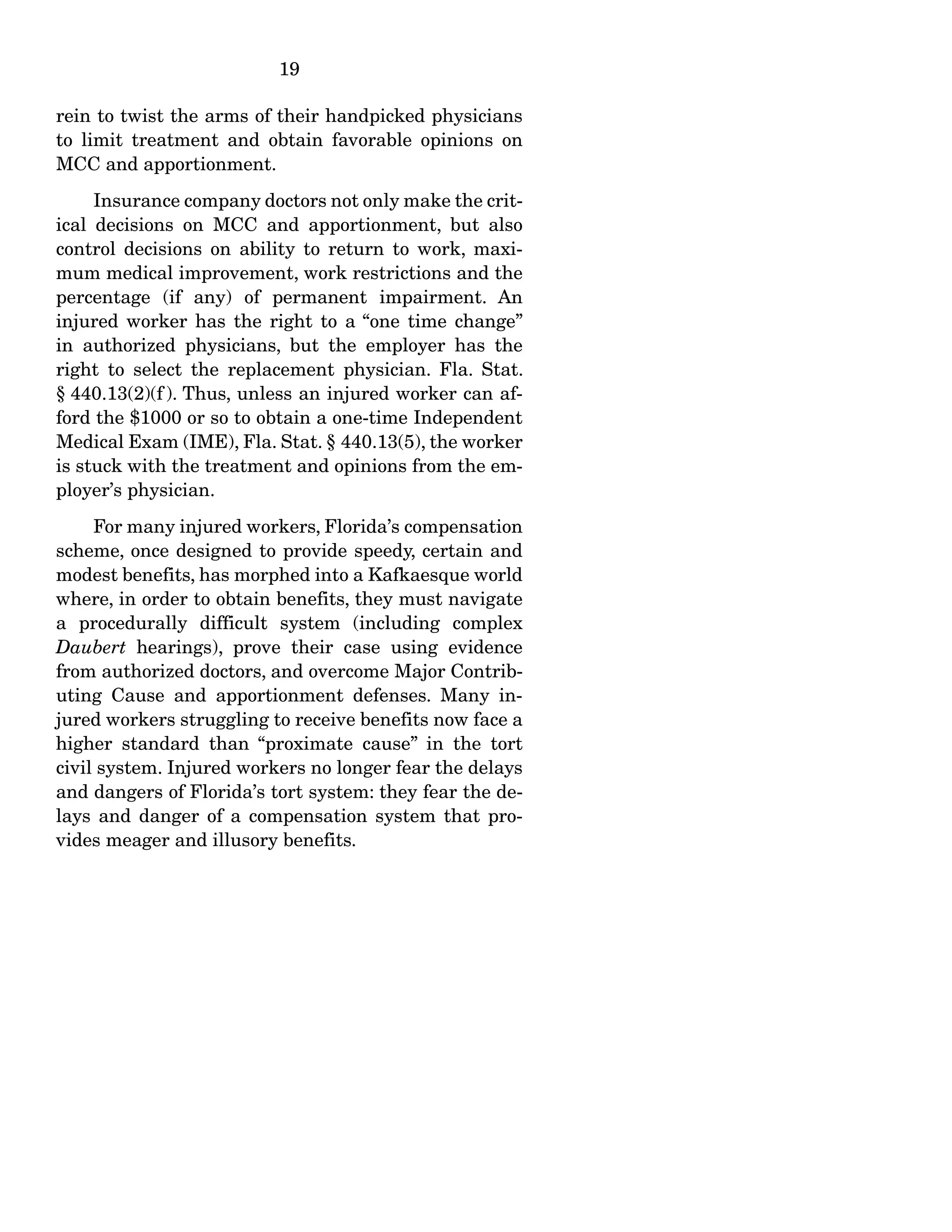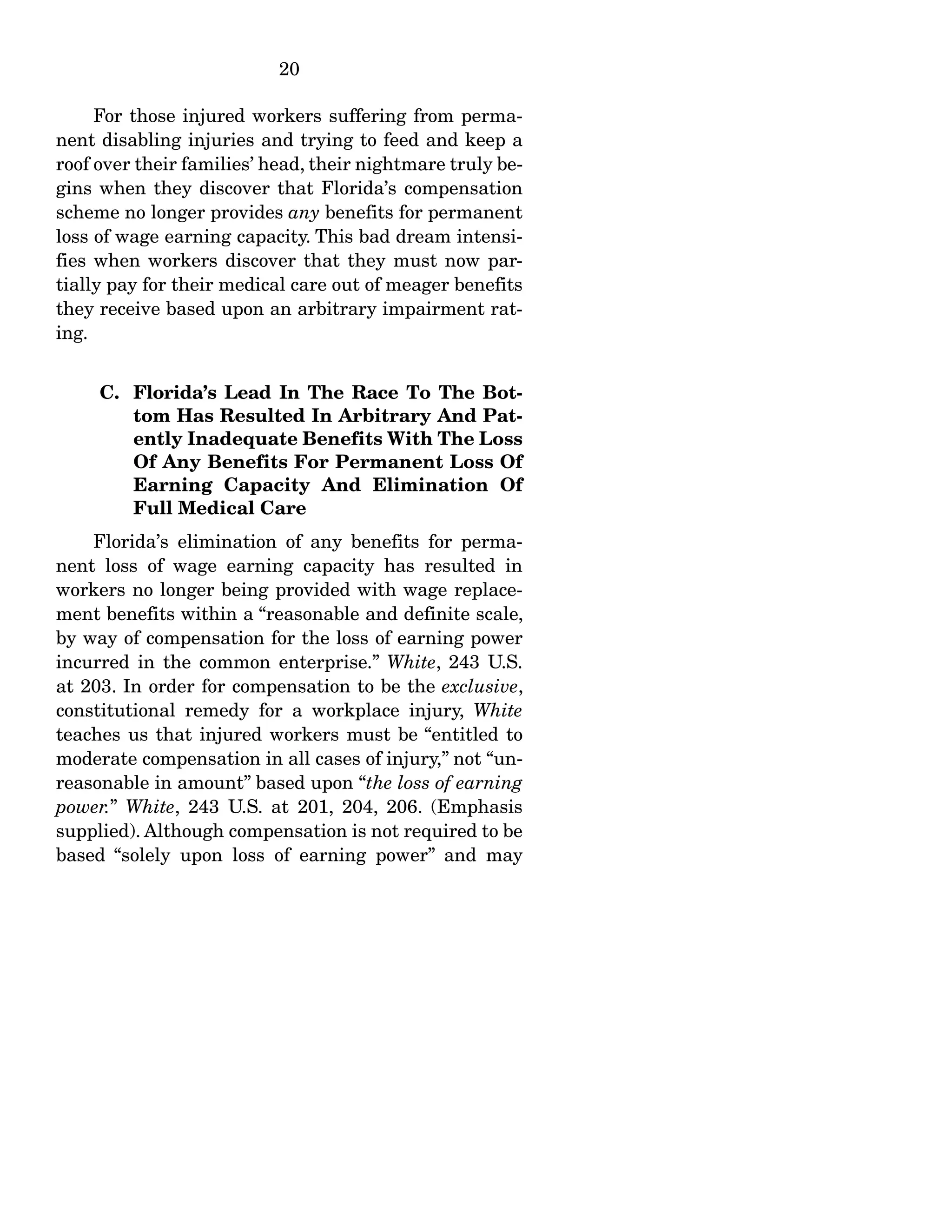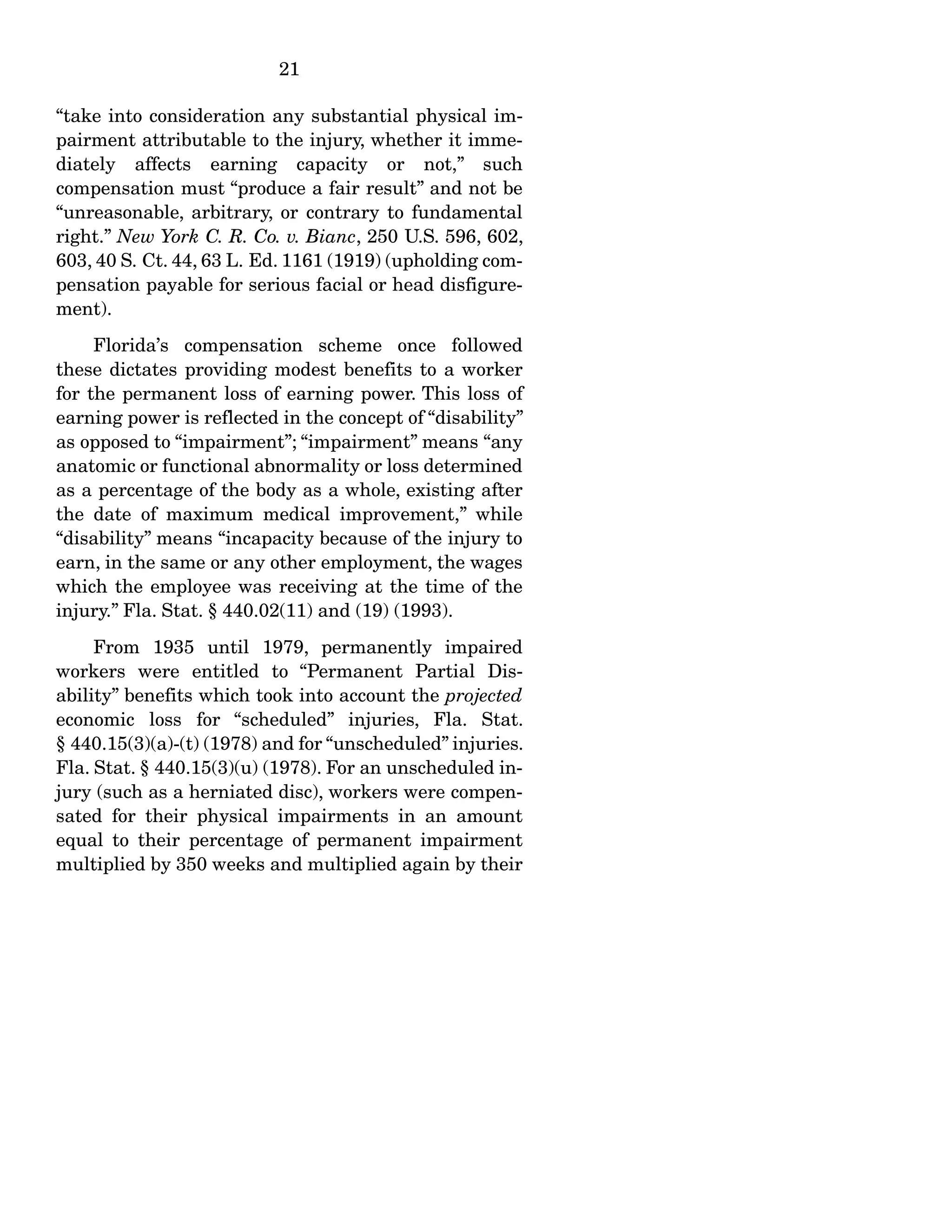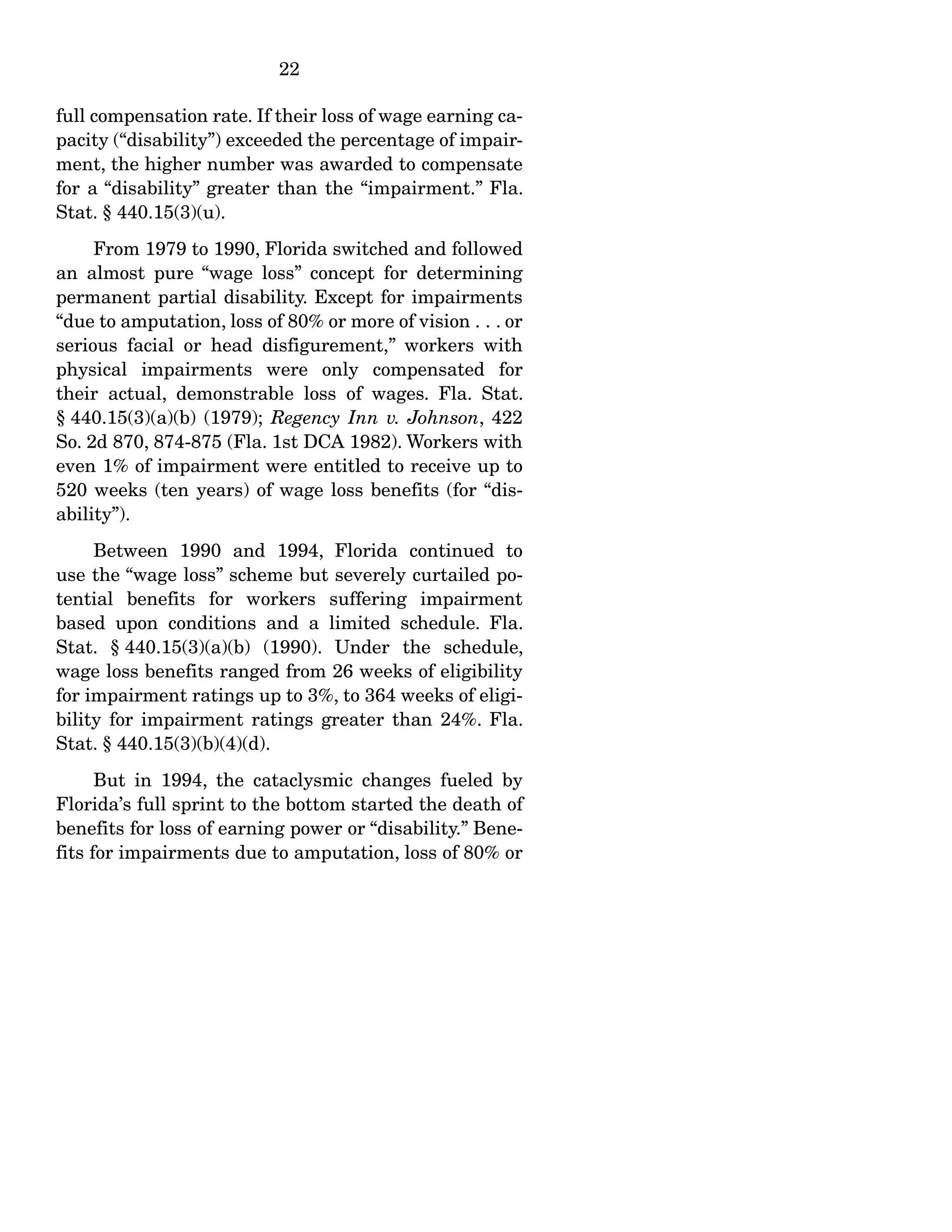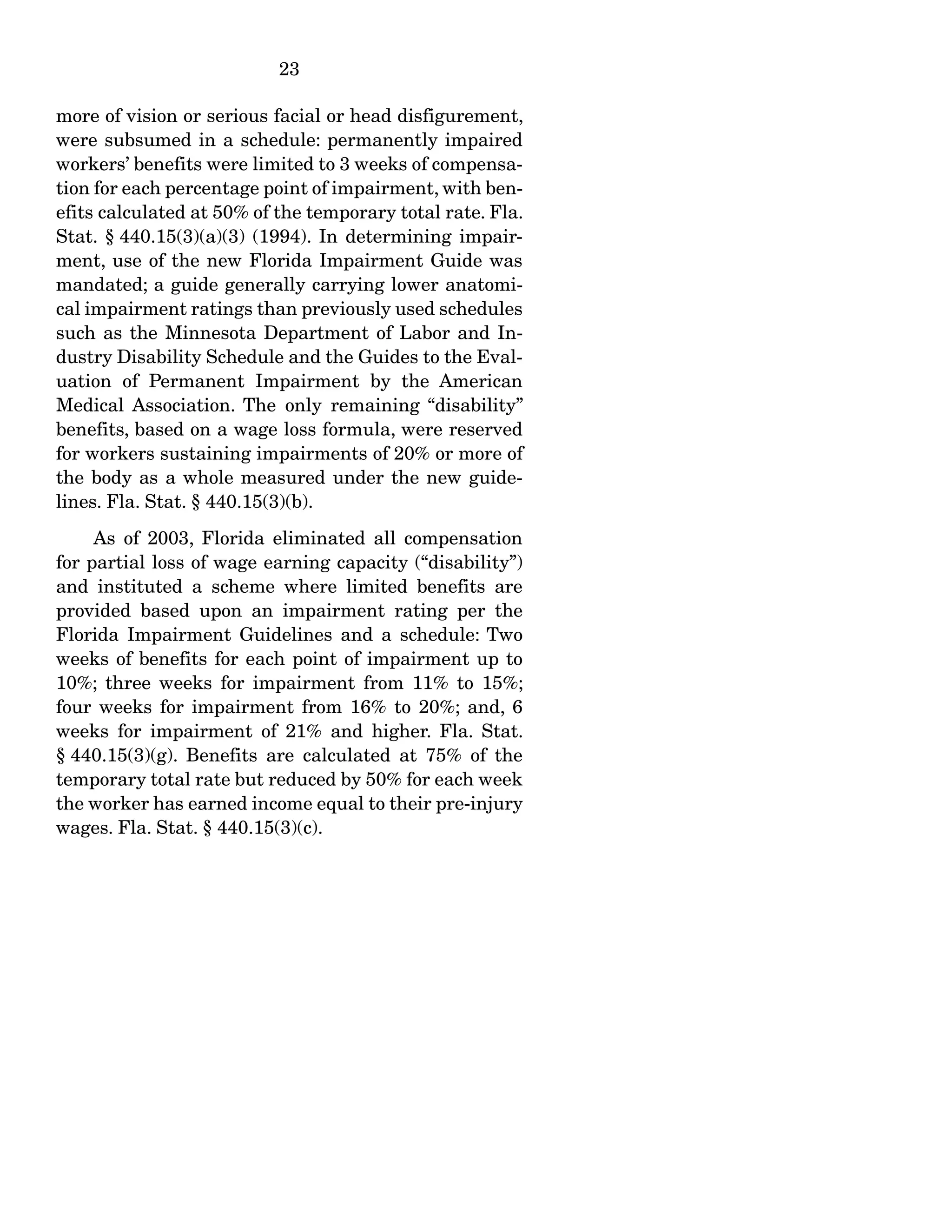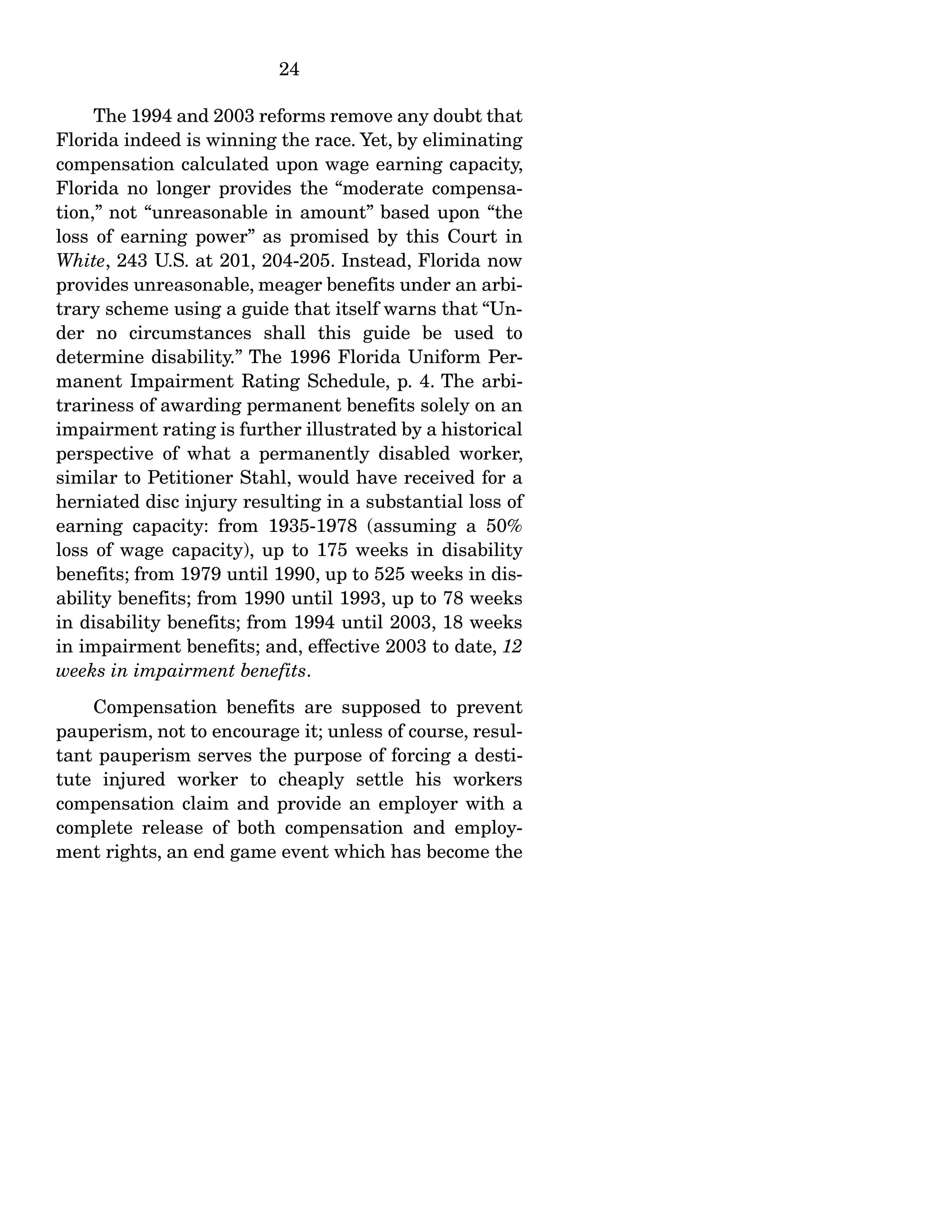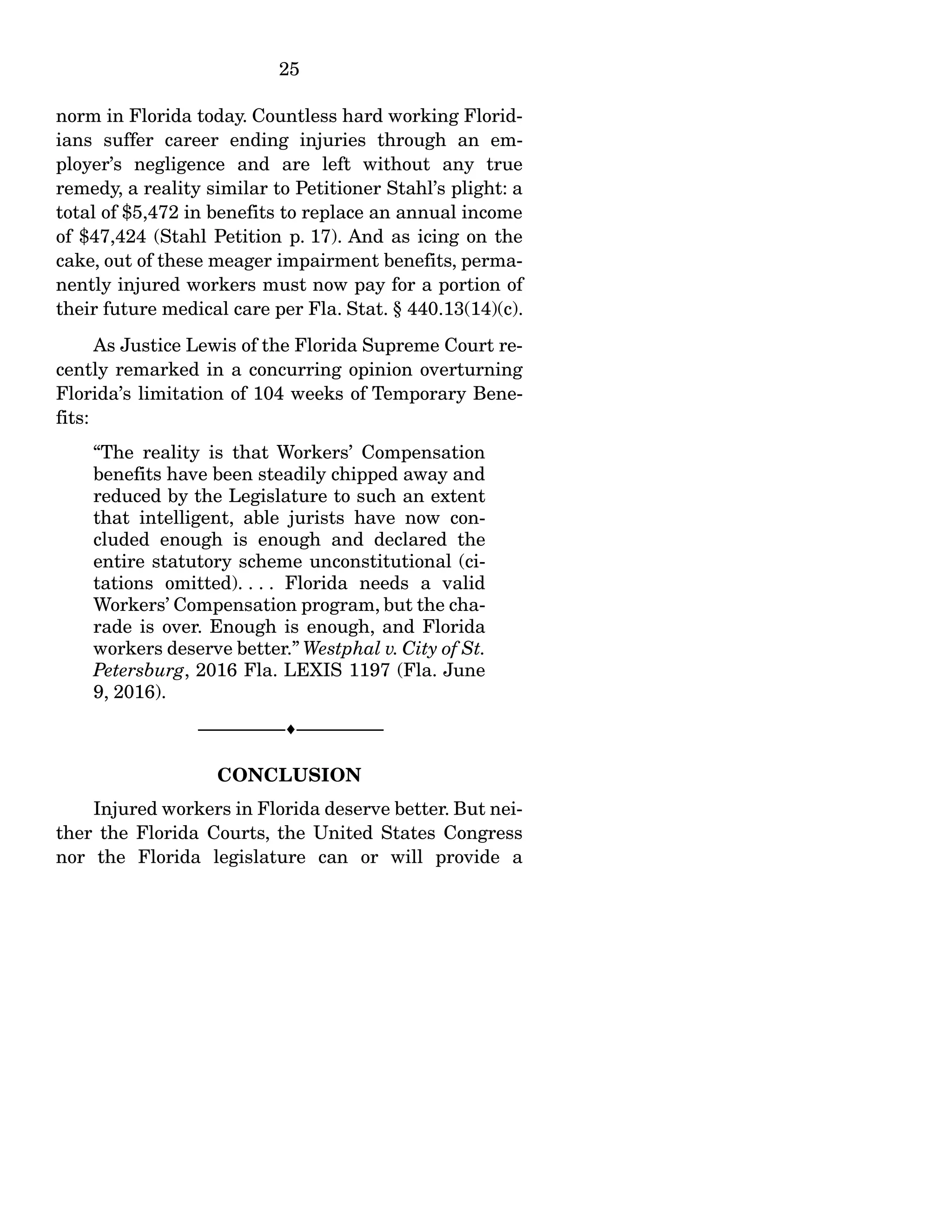This document is an amicus brief submitted in support of the petitioner in a case before the Supreme Court of the United States. The brief argues that Florida's workers' compensation law, which eliminates benefits for permanent partial loss of earning power and does not provide full medical care, fails the due process requirement of providing adequate benefits. It summarizes the history of workers' compensation laws and the national commission that attempted to ensure fair laws, but argues that Florida has led a "race to the bottom" that has destroyed the fairness of its compensation system. The brief urges the Court to grant the petition and hold that Florida's law is unconstitutional.


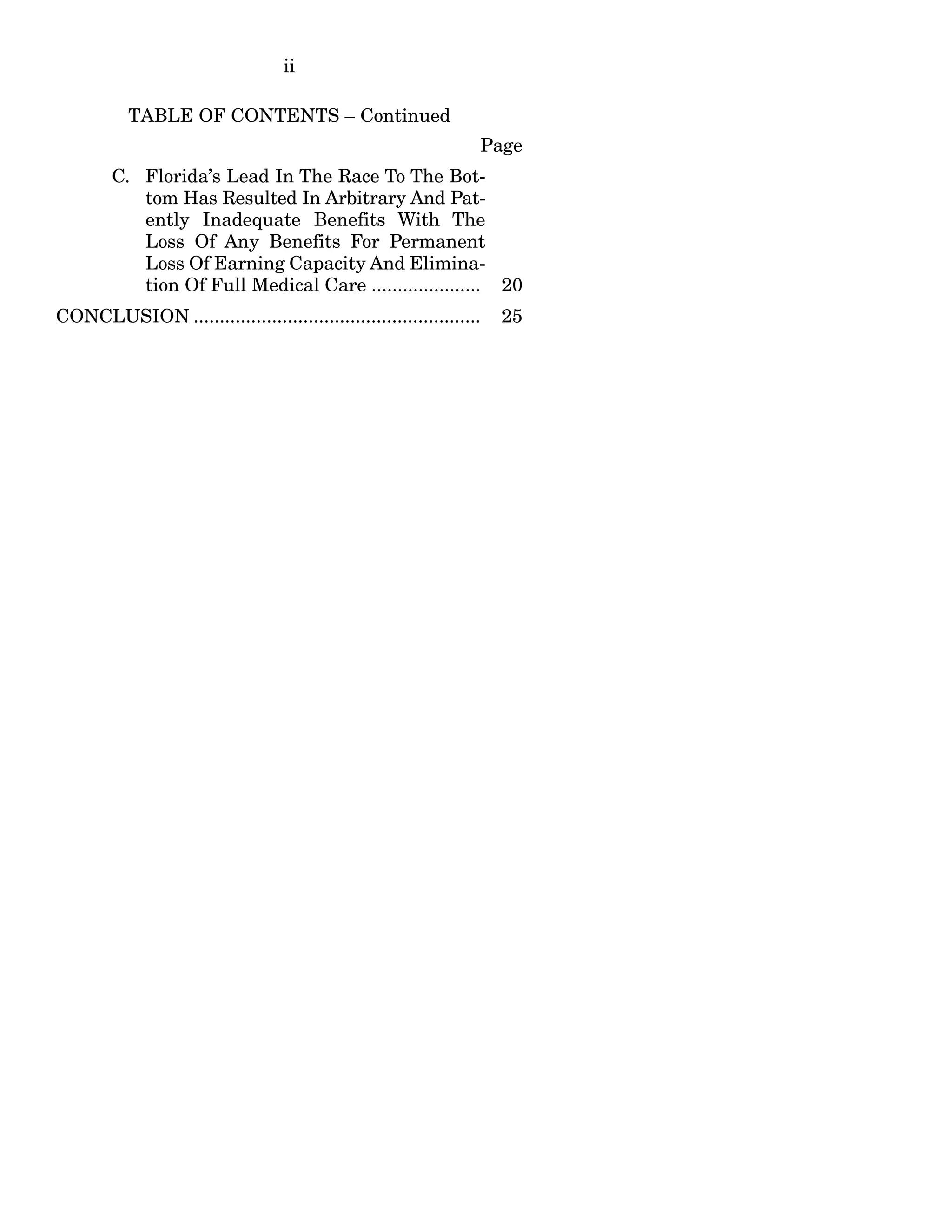
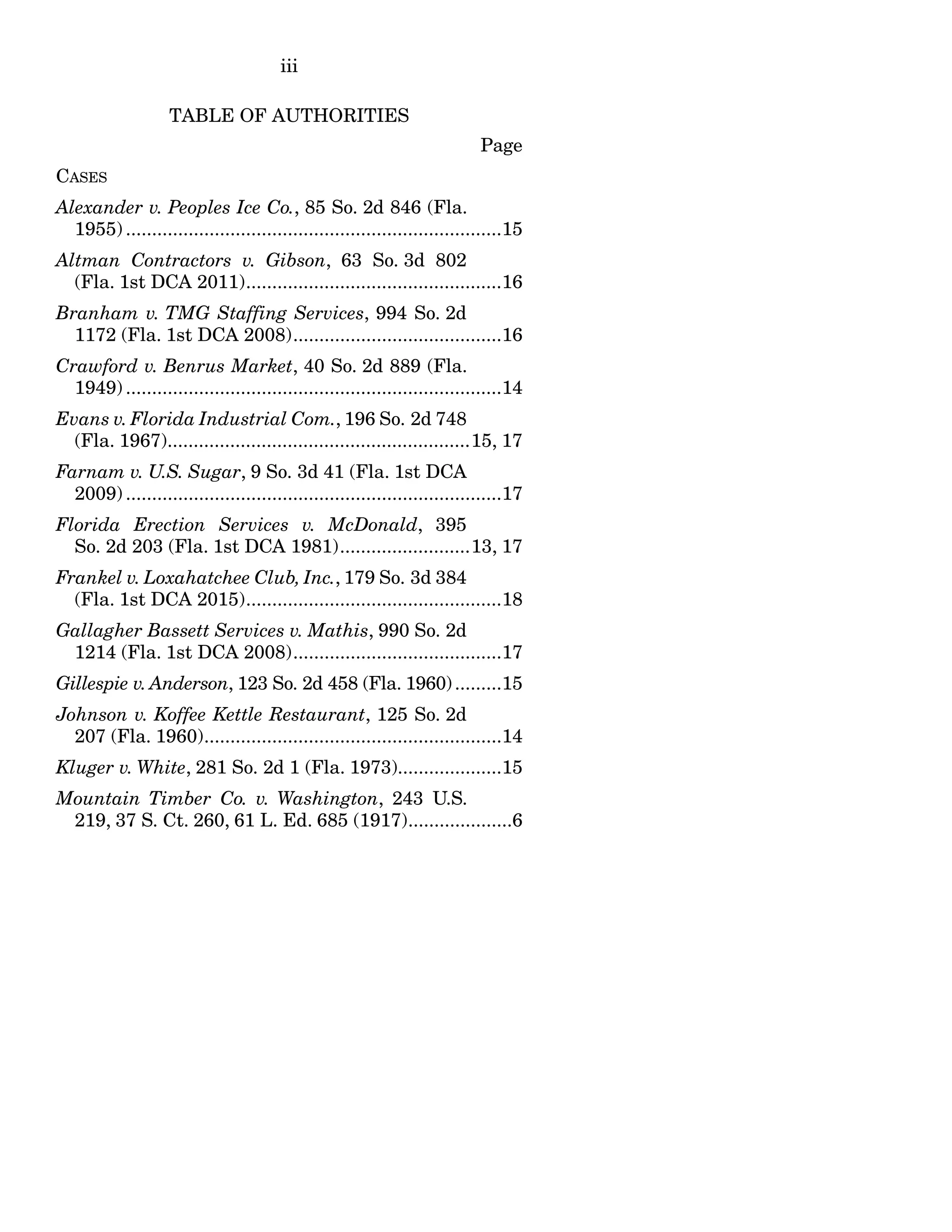

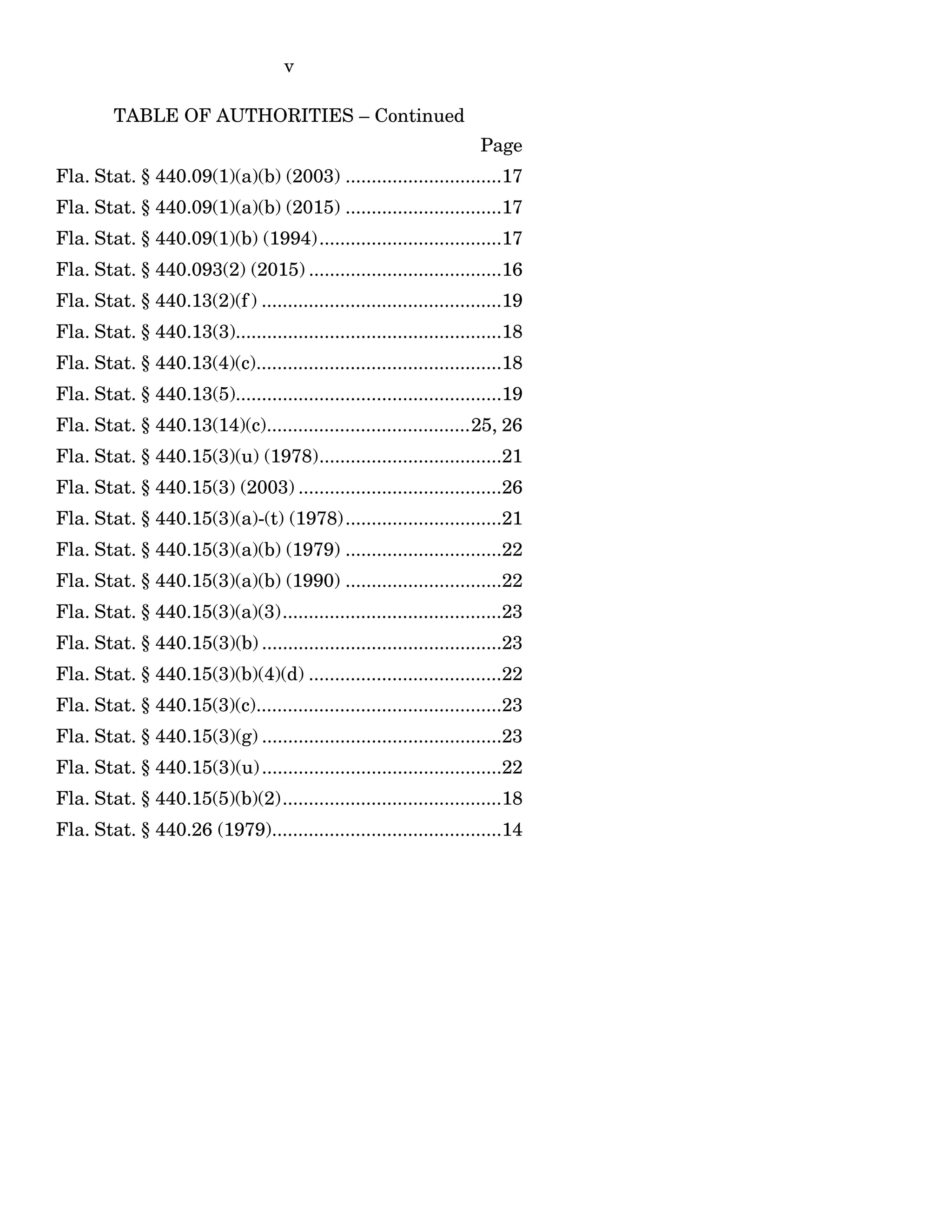
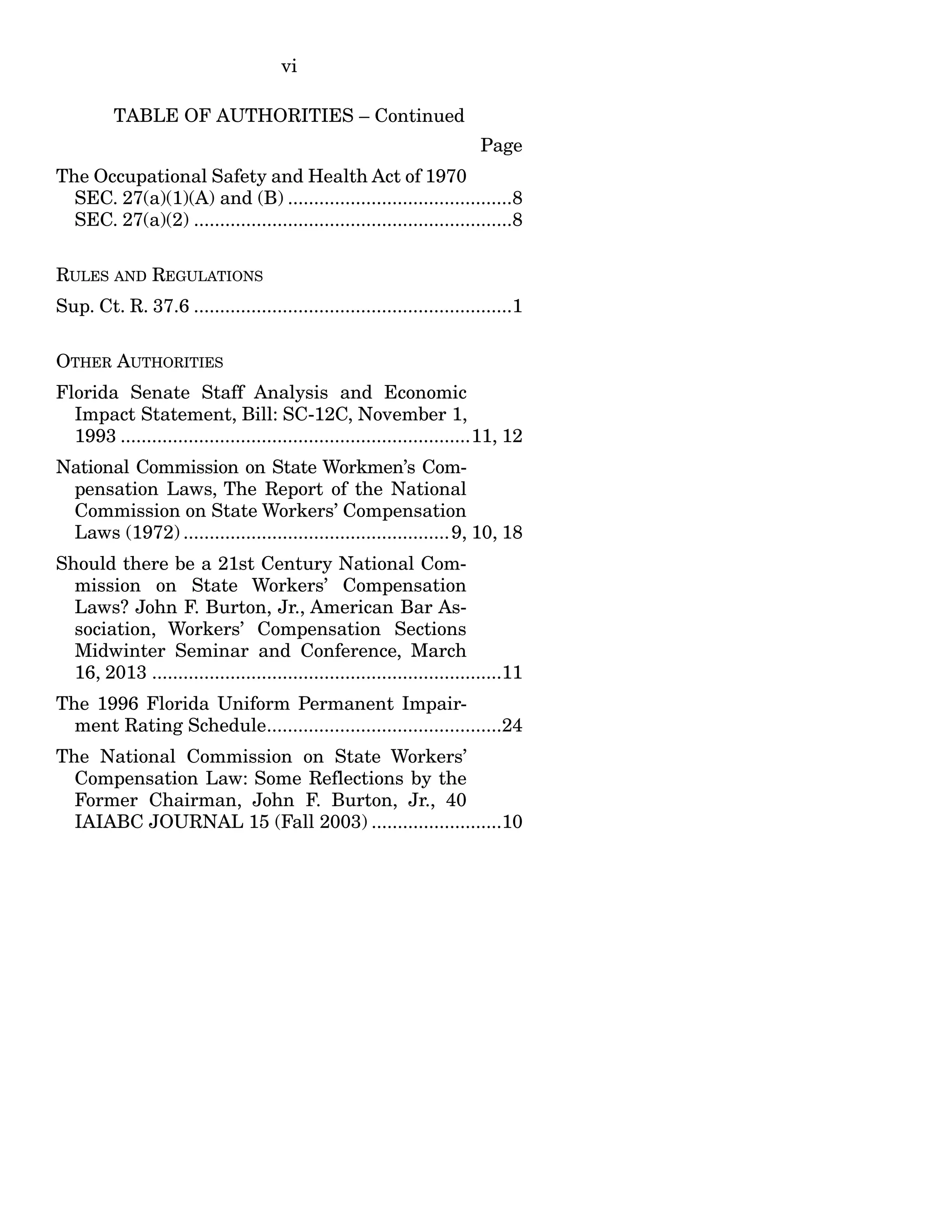
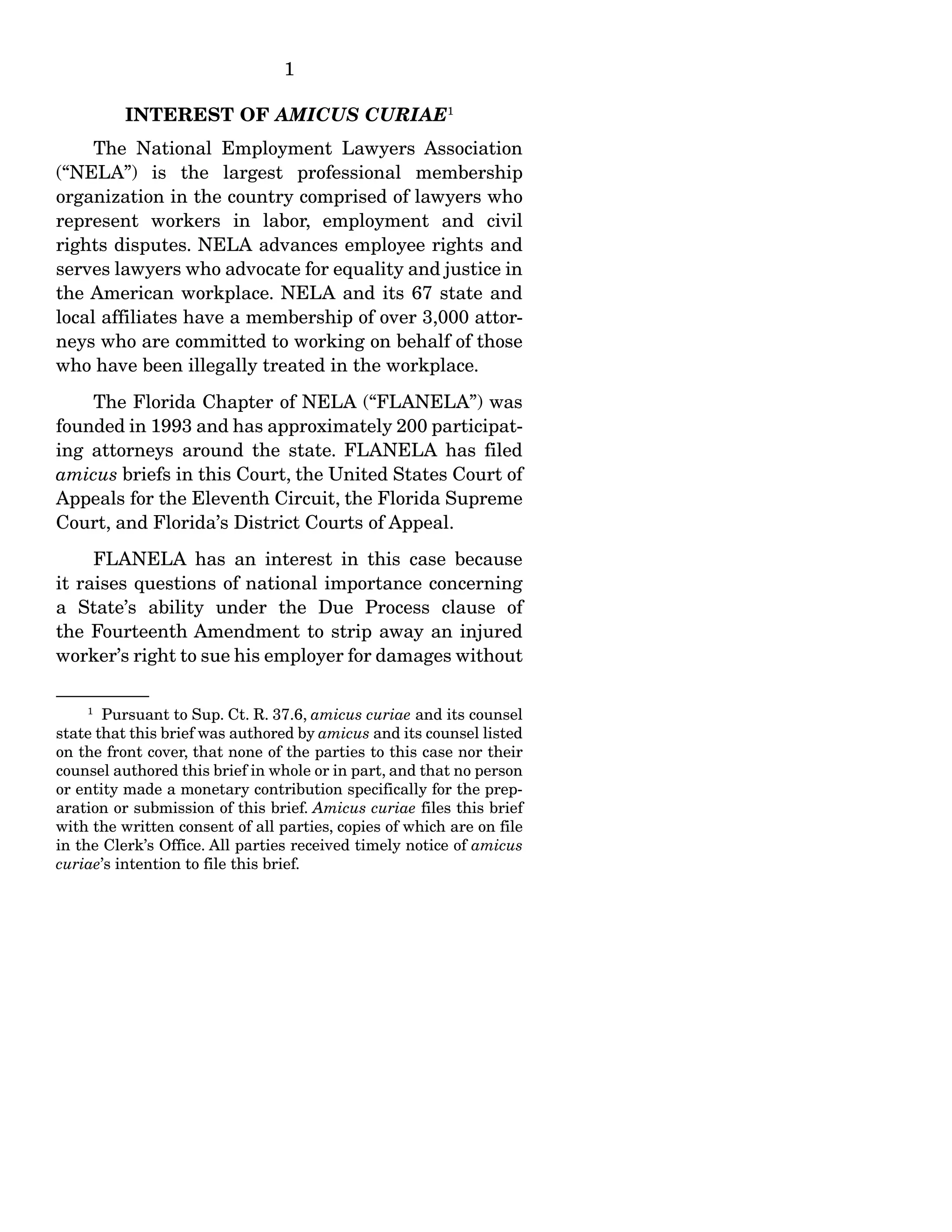

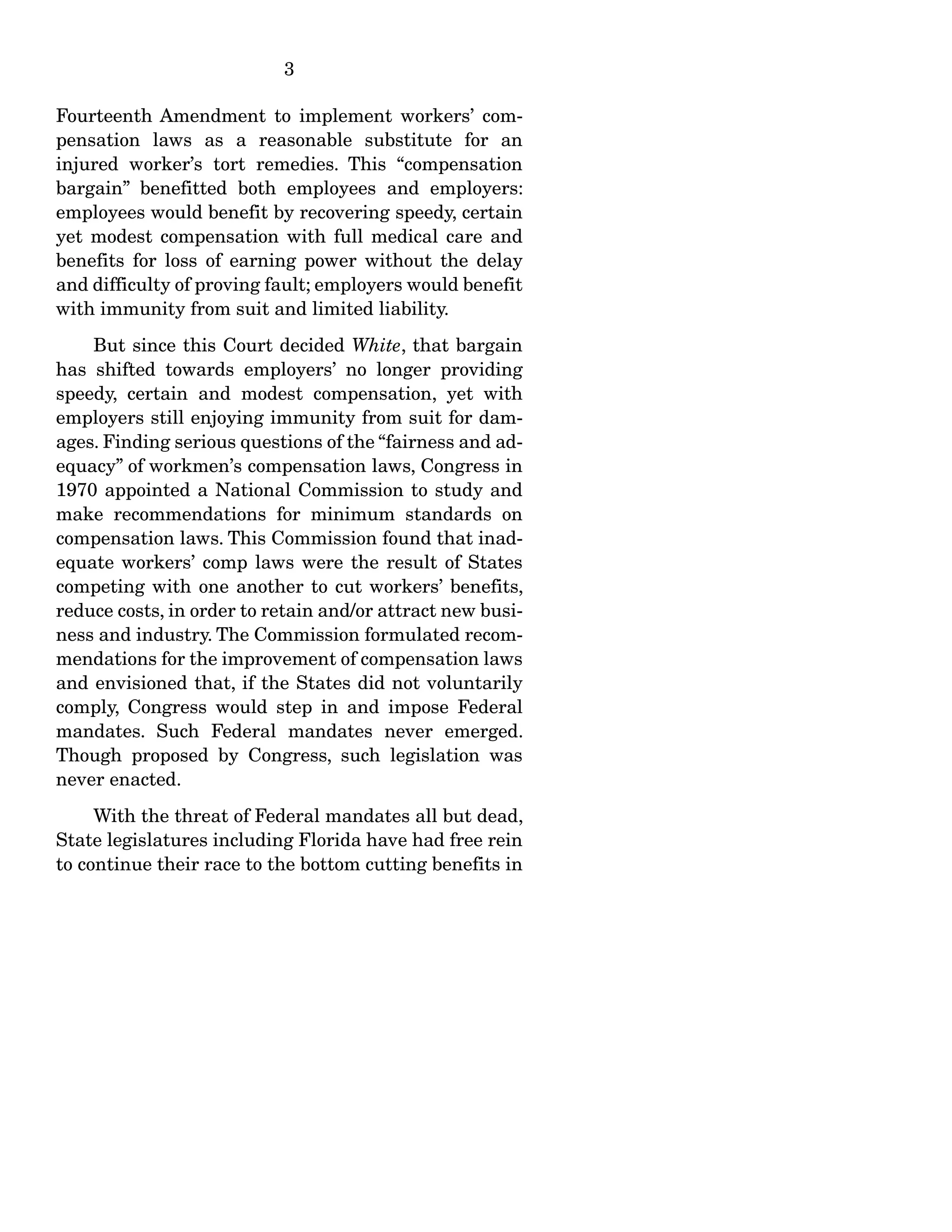
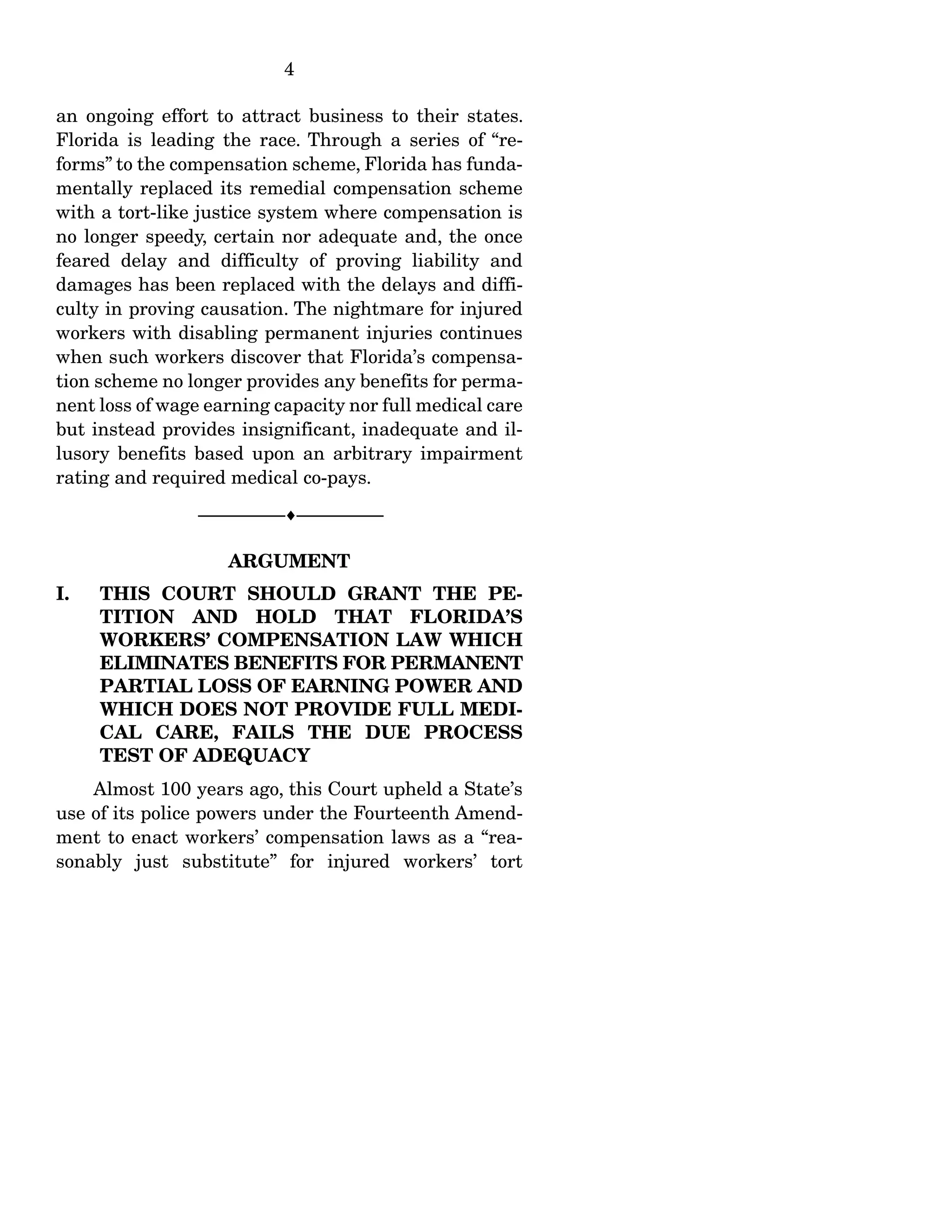

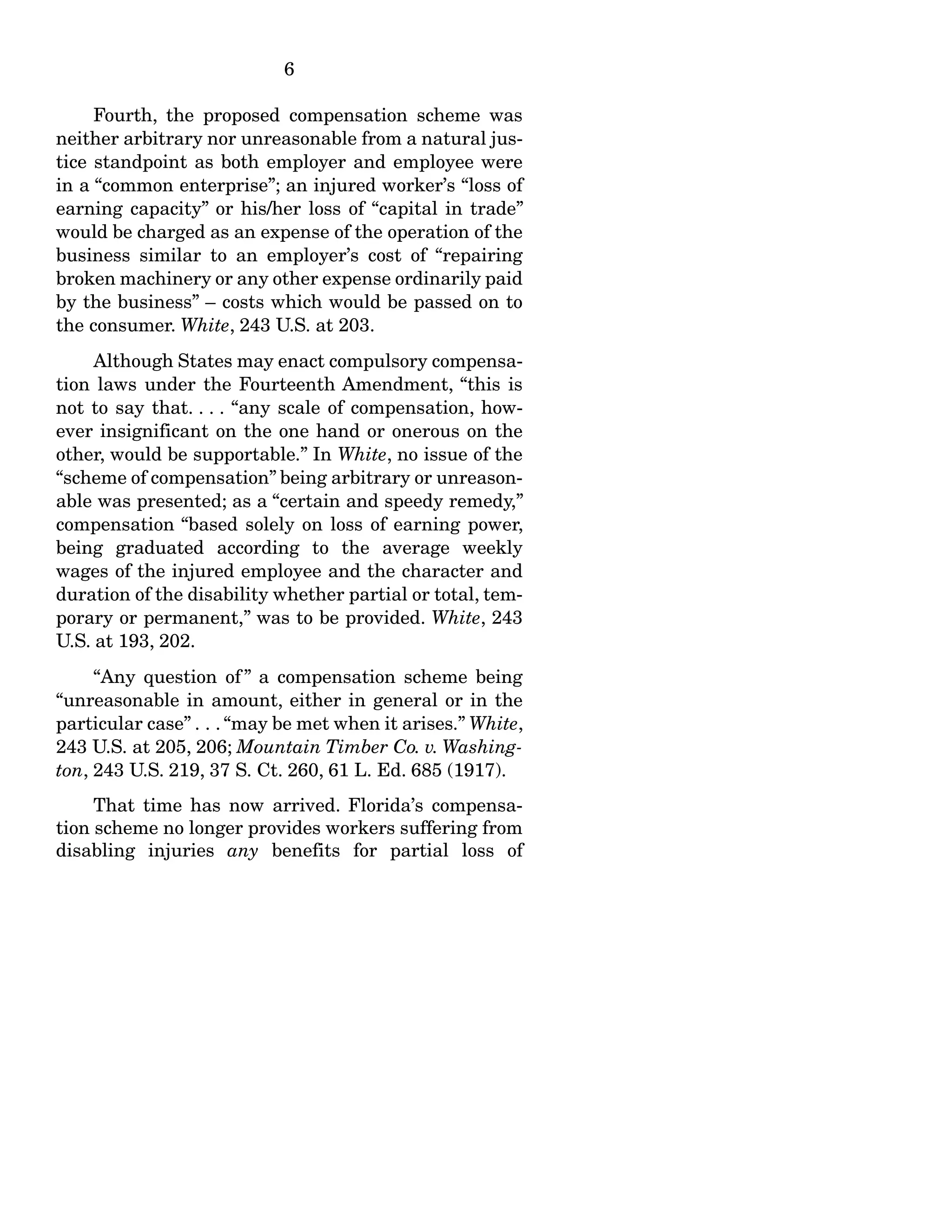
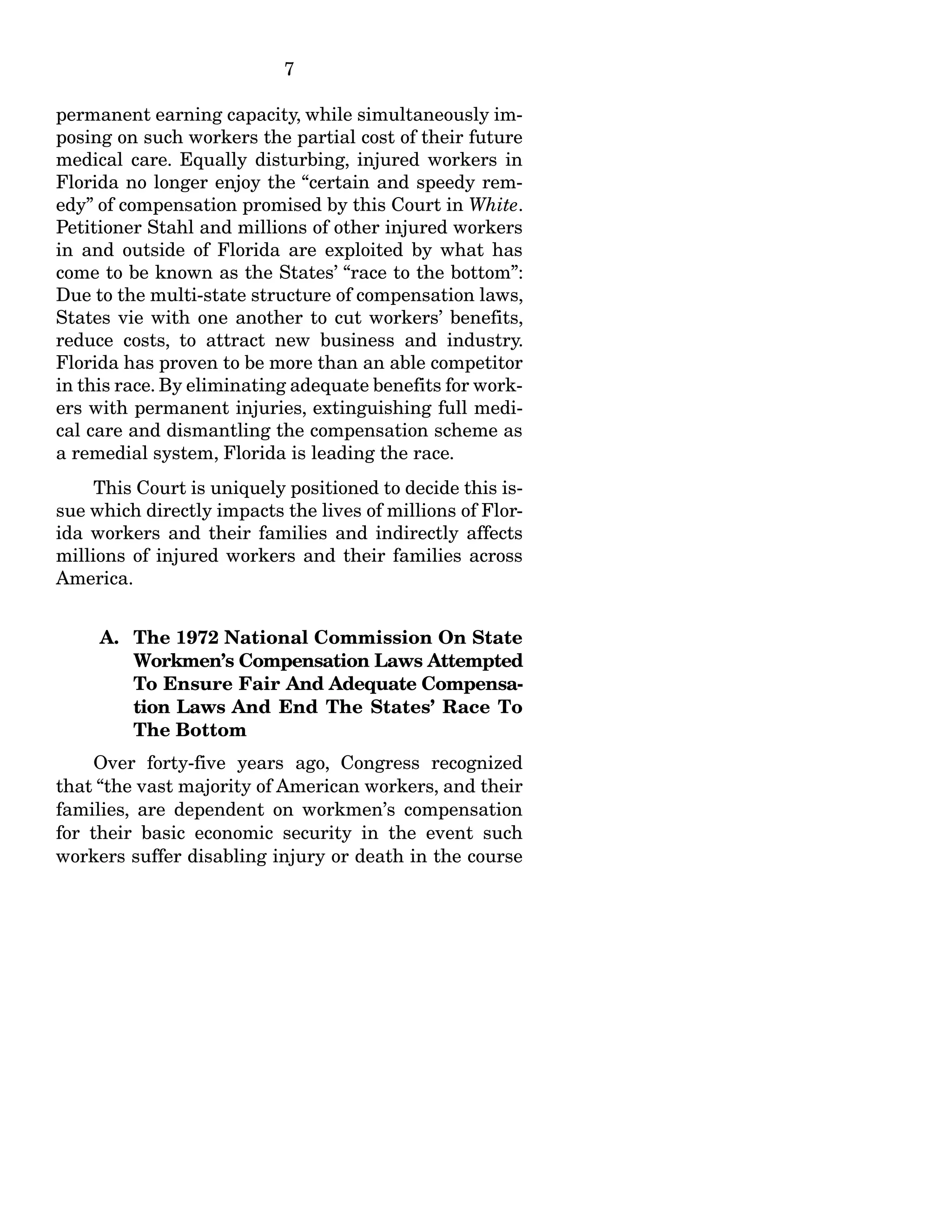
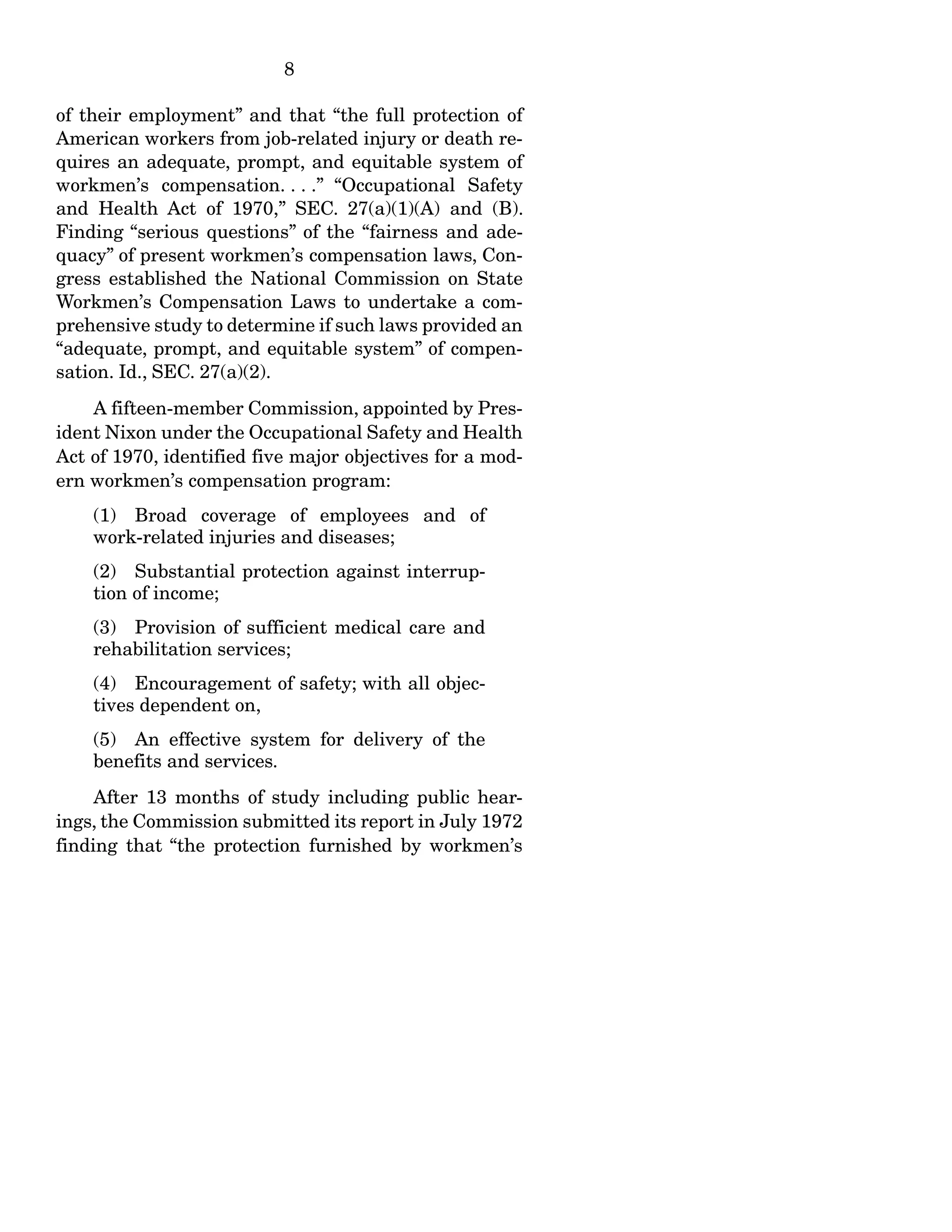
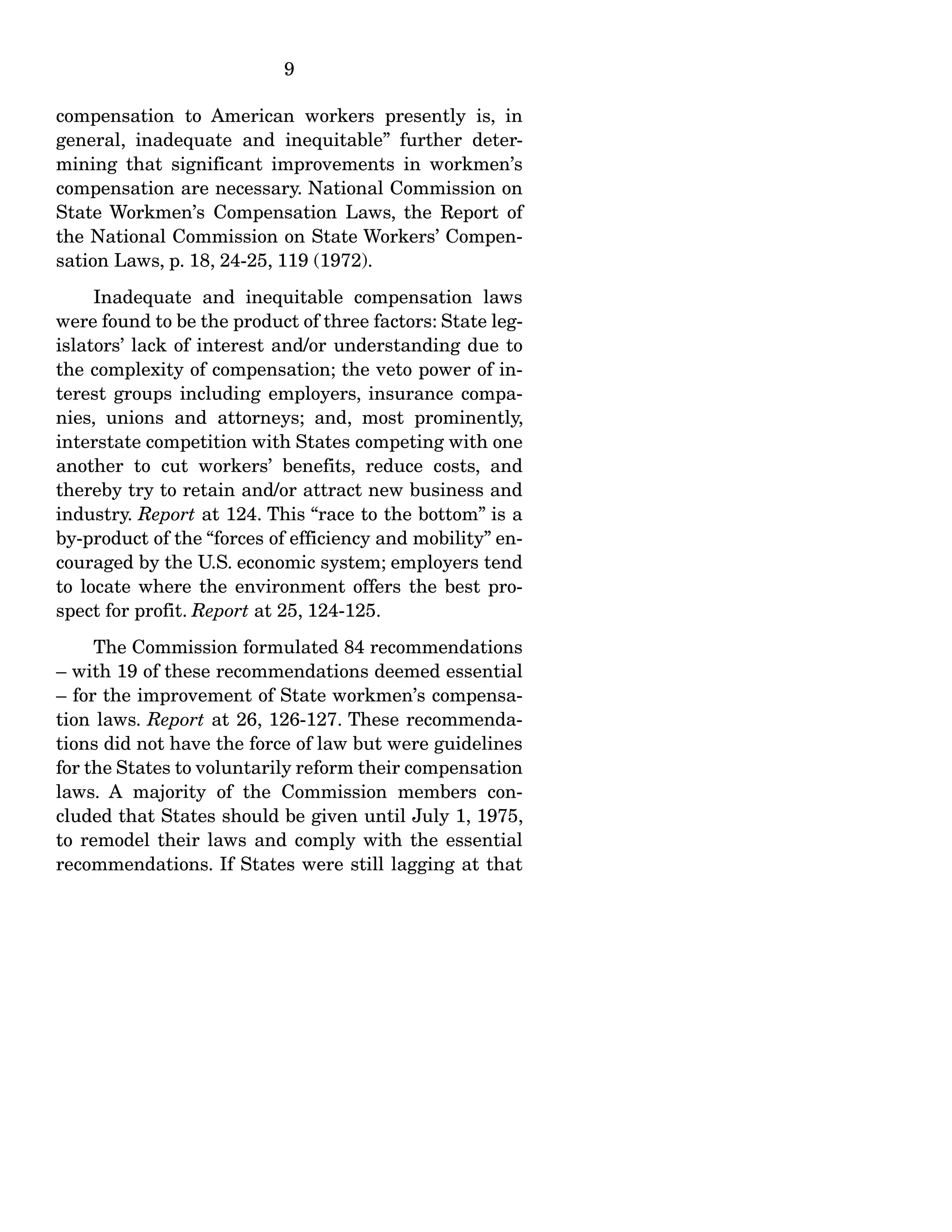
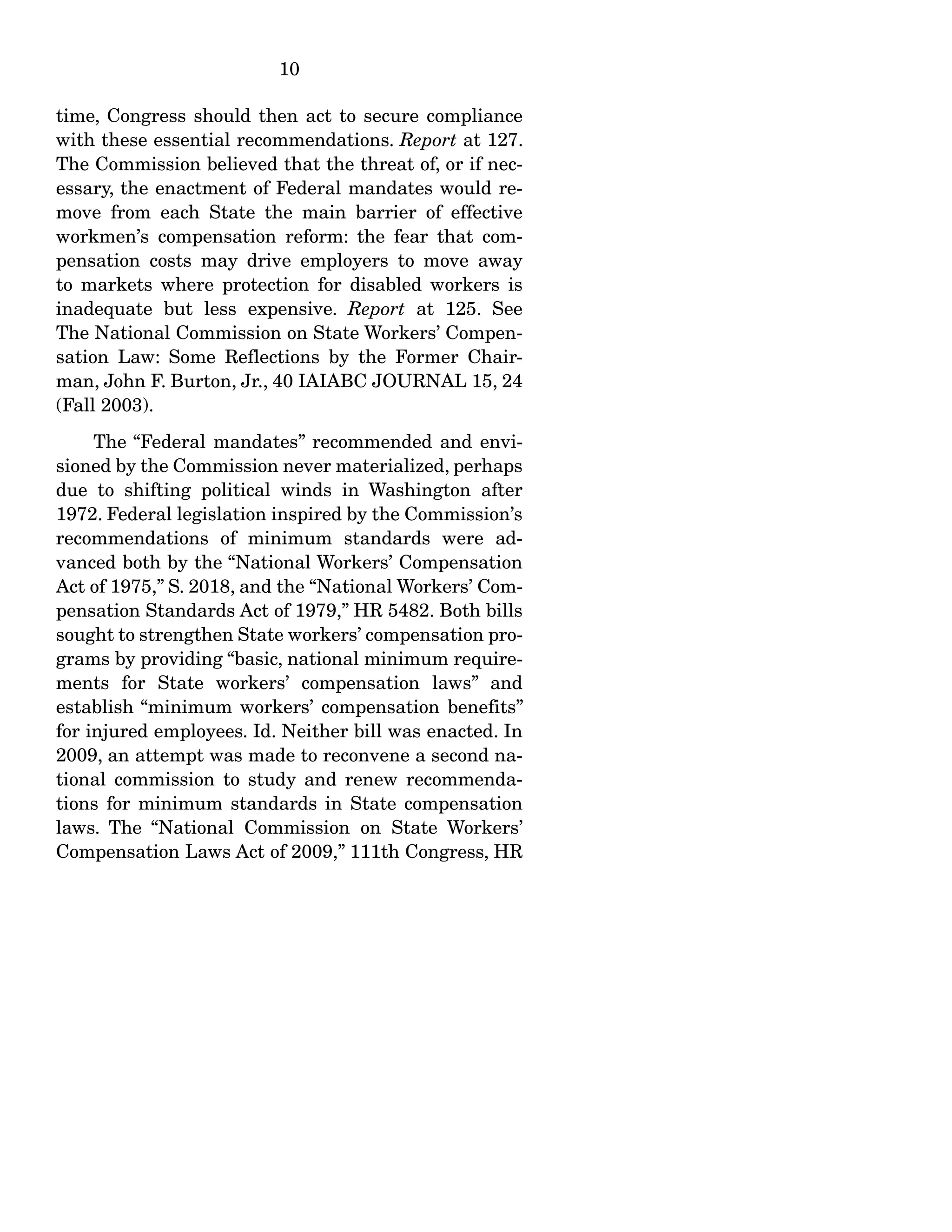

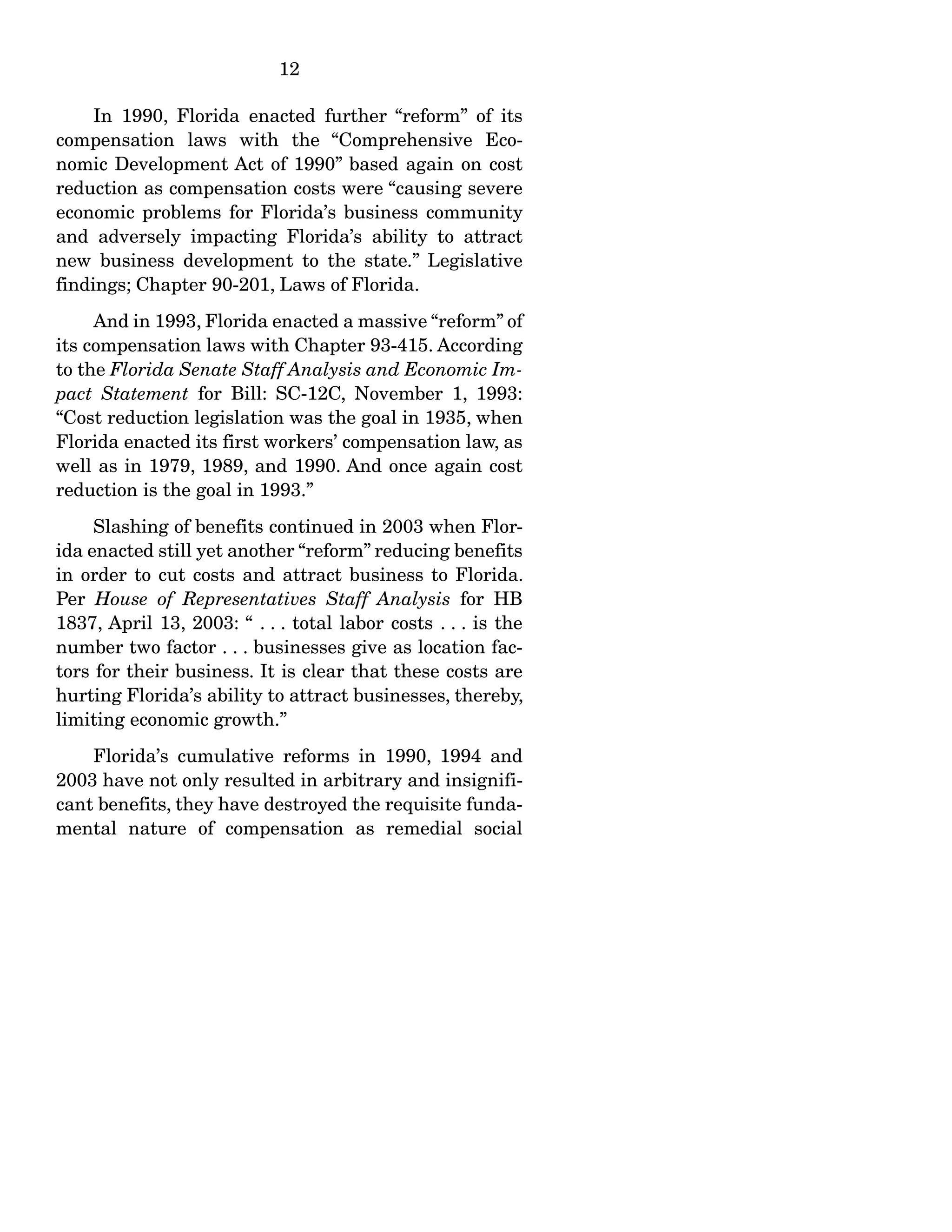
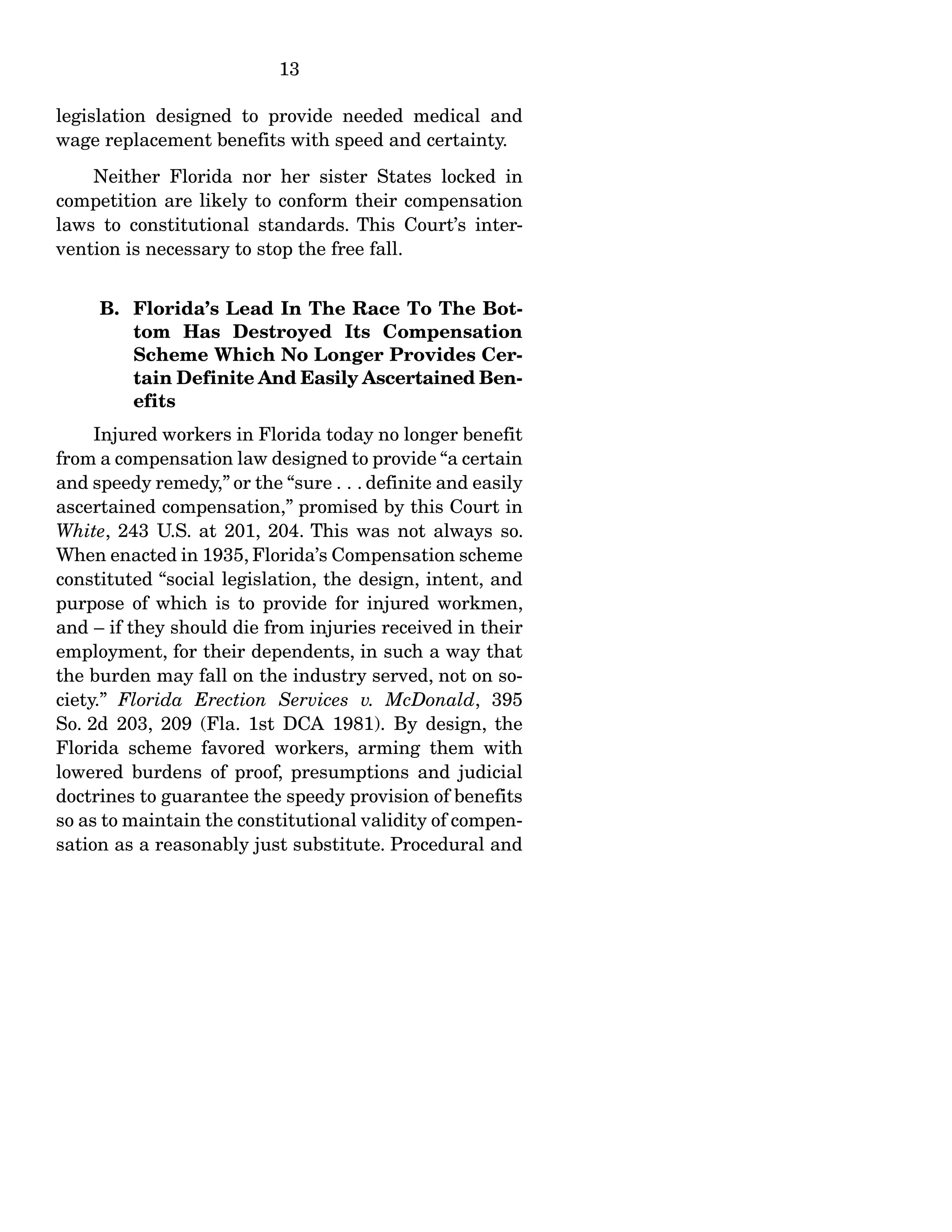
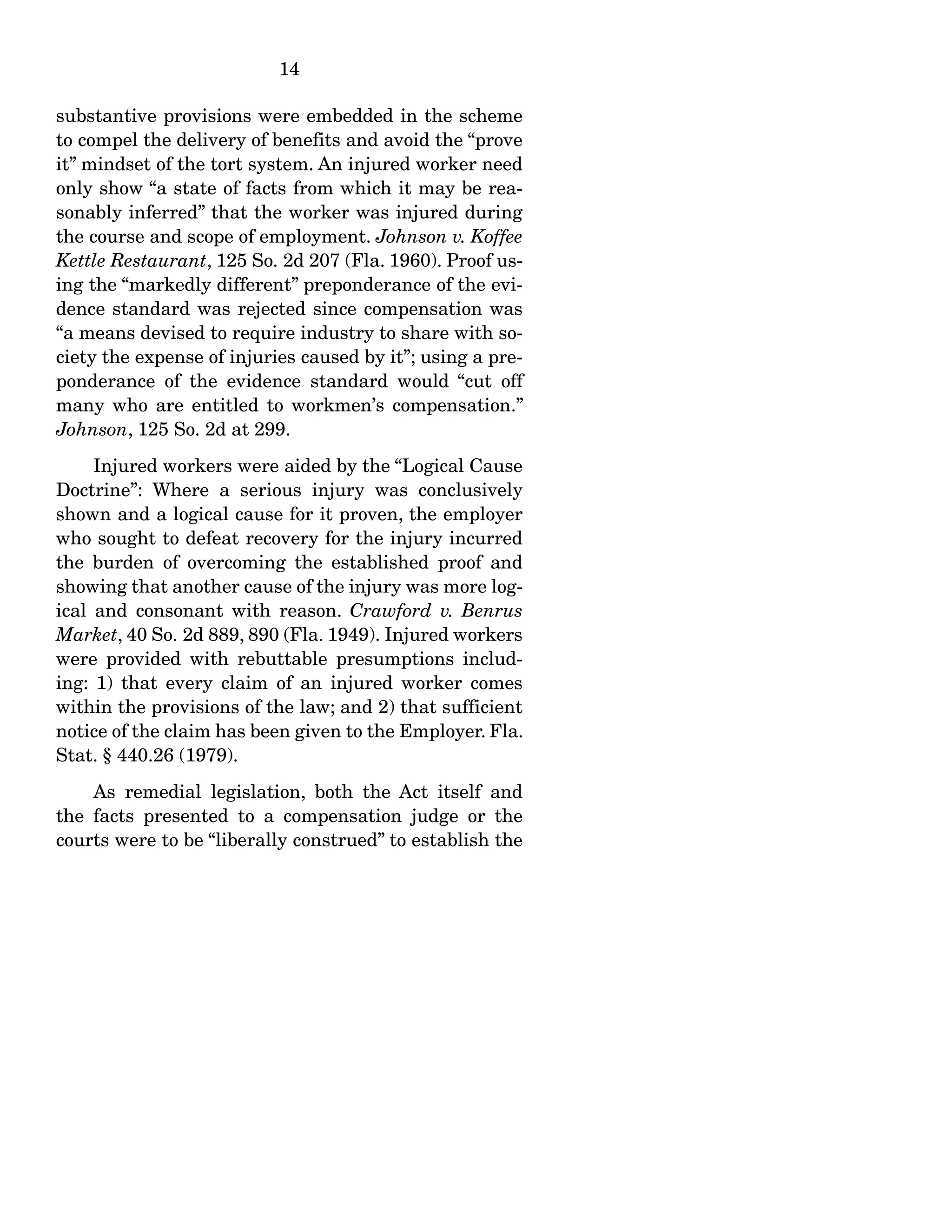
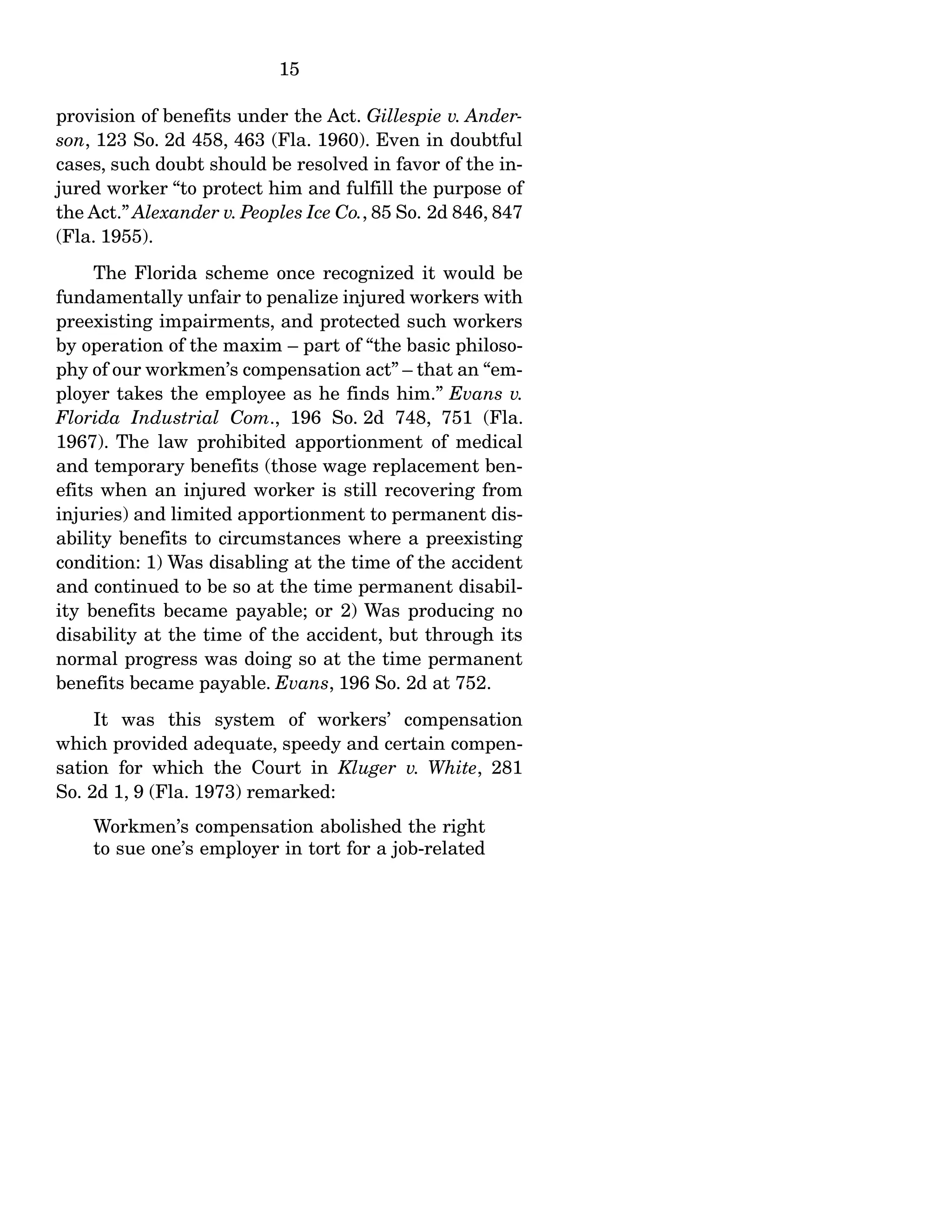
![16
injury, but provided adequate, sufficient, and
even preferable safeguards for an employee
who is injured on the job, thus satisfying one
of the exceptions to the rule against abolition
of the right to redress for an injury.
But in 1994, cataclysmic changes fueled by Flor-
ida’s full sprint to the bottom were made to the Florida
scheme abolishing all of the lowered burdens of proof,
presumptions and judicial doctrines which had been
part of the law for almost 60 years. Liberal construc-
tion of the law and facts, long held to be an aspect of
“certainty” of recovery contributing “to the constitu-
tional validity of the worker’s compensation system.”
Regency Inn v. Johnson, 422 So. 2d 870, 876 (Fla. 1st
DCA 1982), was explicitly outlawed and replaced with
the legislative command that neither “the facts” nor
the compensation “laws” are “to be interpreted liber-
ally in favor of either employee or employer.” Fla. Stat.
§ 440.015 (2003). Workers must now prove their case
by a preponderance of the evidence, Branham v. TMG
Staffing Services, 994 So. 2d 1172 (Fla. 1st DCA 2008),
a standard which “cut[s] off many who are entitled to
workmen’s compensation.” Johnson, 125 So. 2d at 299.
Injuries due to occupational disease, repetitive expo-
sure, exposure to a toxic substance and/or mental or
nervous injuries now require proof by the “practically
unachievable” burden of “clear and convincing evi-
dence.” Fla. Stat. § 440.09(1), § 440.093(2) (2015).
Altman Contractors v. Gibson, 63 So. 3d 802 (Fla. 1st
DCA 2011) (Wolf, J., dissenting).](https://image.slidesharecdn.com/87f30f15-b159-4bd9-a388-632d0e0a6a71-160826161357/75/Stahl-Amicus-of-FLANELA-FILED-23-2048.jpg)
![17
The 1994 reforms went much further. Aside from
truncating substantive medical and wage benefits,
Florida abolished its remedial compensation scheme
“the design, intent and purpose of which is to provide
for injured workmen” Florida Erection, 395 So. 2d at
209, and instituted a tort-like, “prove it” system of
justice replete with higher standards of proof and in-
creased standards to prove causation or the “compen-
sability” of an injury. “[T]he basic philosophy of our
workmen’s compensation act” – that an “employer
takes the employee as he finds him,” Evans, 196 So. 2d
at 751, was abolished and replaced with the test of “Ma-
jor Contributing Cause” (MCC). Fla. Stat. § 440.02(32);
§ 440.09(1)(b) (1994). An even more stringent version
of the MCC test was instituted in 2003. Fla. Stat.
§ 440.09(1)(a)(b) (2003). Under current law, workers
must establish – in order to receive any medical or dis-
ability benefits – that their accident is more than 50%
responsible for the injury compared to all other causes
combined for which treatment or benefits are sought.
Fla. Stat. § 440.09(1)(a)(b) (2015); Gallagher Bassett
Services v. Mathis, 990 So. 2d 1214 (Fla. 1st DCA
2008). Proof of MCC is not only mandatory at the out-
set; in order to continue to receive medical or disability
benefits, workers must be able to constantly prove that
the accident is and remains more than 50% responsible
for the injury as compared to all other causes com-
bined. Farnam v. U.S. Sugar, 9 So. 3d 41 (Fla. 1st DCA
2009). Under Florida’s current scheme, the delays and
difficulty of proof of liability and damages feared in
White have been replaced with the delays and diffi-
culty of proving causation to recover meager benefits.](https://image.slidesharecdn.com/87f30f15-b159-4bd9-a388-632d0e0a6a71-160826161357/75/Stahl-Amicus-of-FLANELA-FILED-24-2048.jpg)

